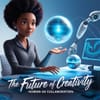The intersection of creativity, art, and artificial intelligence (AI) is transforming the way we approach artistic expression. AI's impact on the creative industry is multifaceted, enabling artists to leverage technology to enhance their work while raising important questions about authorship, ownership, and authenticity.
AI-generated art has come a long way since its inception. From early experiments with algorithmic art to the current use of deep learning models, AI has become increasingly sophisticated in creating art that mimics human creativity. Examples include AI art systems like AARON, developed by Harold Cohen, and AI-generated films like Japanese film generAIdoscope and anime series Twins Hinahima.
Rather than replacing human artists, AI is being used to augment and collaborate with human creativity. This synergy enables artists to focus on high-level creative decisions while leveraging AI for tasks like data analysis, pattern recognition, and idea generation. Adobe Sensei, for instance, uses AI to streamline complex design tasks, allowing graphic designers to focus on creative aspects.
As AI continues to evolve, it's likely to become even more adept at mimicking human creative processes, leading to more effective collaboration between humans and machines. The potential for personalized creative tools, tailored to individual artists' needs, could return authenticity to the creative process.
The future of creativity lies in the synergy between human imagination and AI's capabilities, driving innovation and artistic expression to new heights. Establishing frameworks to ensure the relationship between imagination and tools remains clear will be crucial in addressing concerns around bias, privacy, and accountability.


